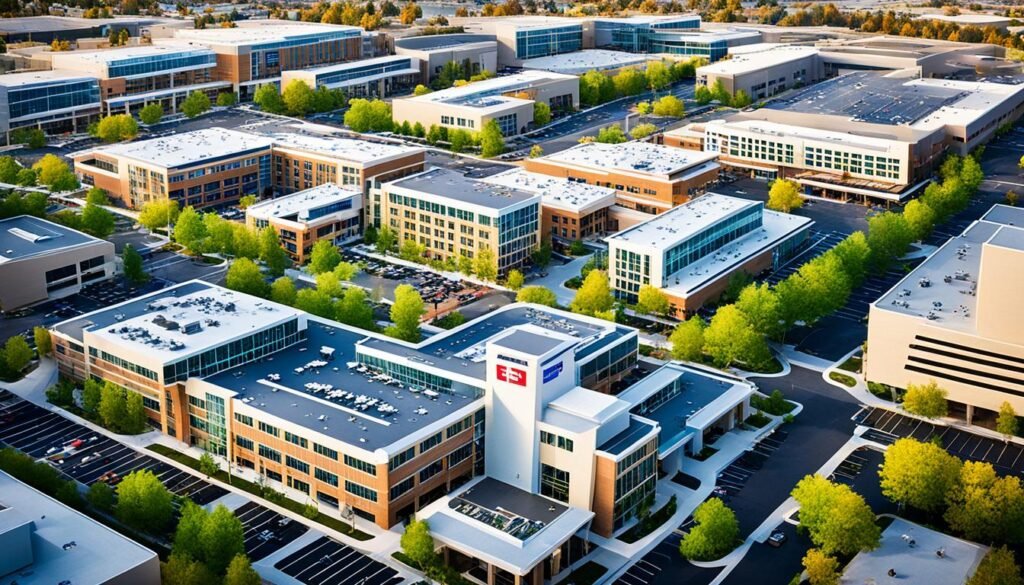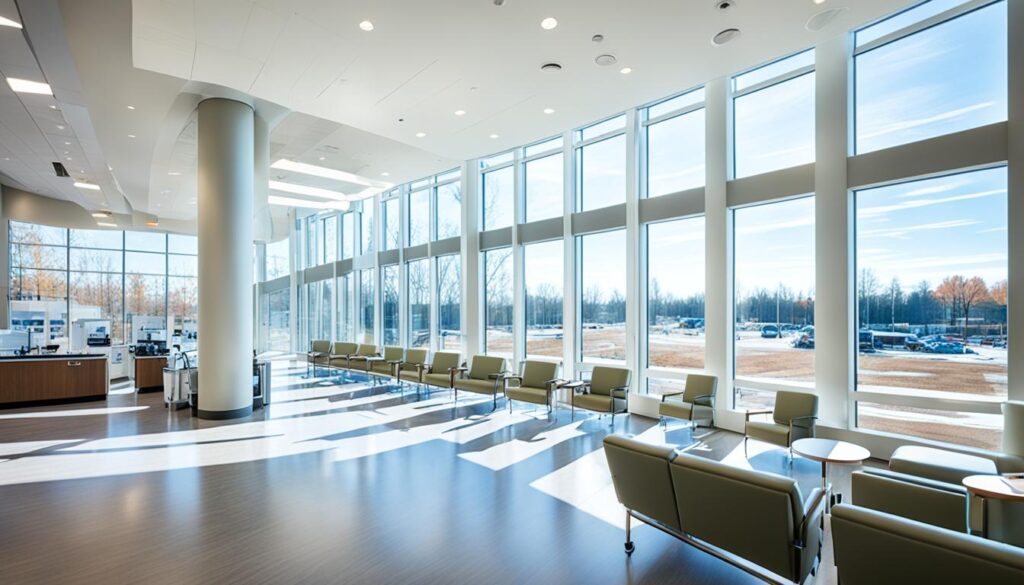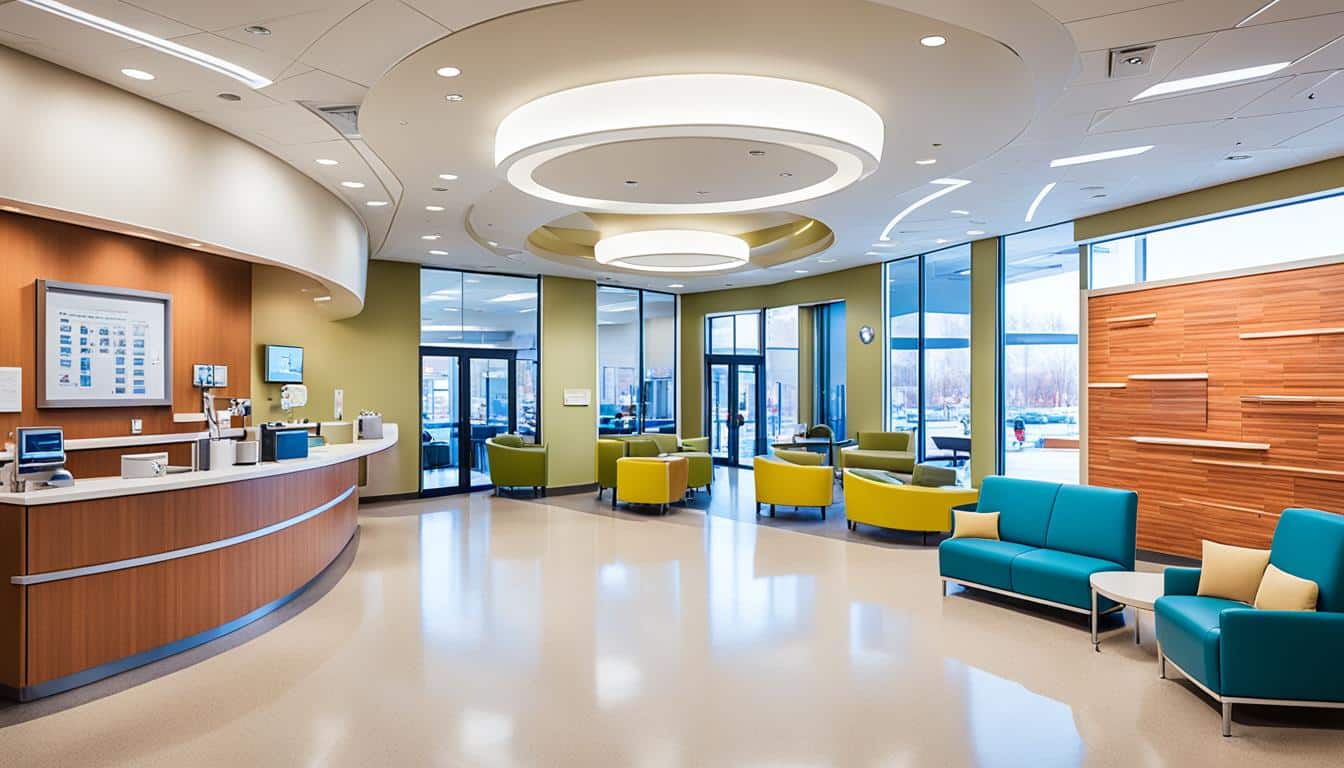- Medical health facilities are essential components of community health and wellness. They provide a wide range of essential services, from routine checkups and preventive care to specialized treatments and emergency care. These facilities play a crucial role in promoting the overall well-being of community members by addressing their diverse health needs.
Medical health facilities, such as hospitals, clinics, and specialized care centers, serve as hubs for healthcare services within a community. They offer a wide range of treatments and services to patients, aiming to address a wide range of illnesses and injuries. These facilities may work in collaboration with care providers, medical staff, and other health care facilities to deliver comprehensive medical care to the community.
By providing access to primary care, preventive care, and specialized treatments, these health facilities allow patients to manage their health and prevent the onset of more serious conditions. Community health centers and hospitals typically offer a wide range of services, from routine checkups to emergency treatments, while specialized care facilities may focus on specific areas of healthcare, such as mental health or chronic disease management.
The funding and resources available to these medical health facilities play a crucial role in their ability to provide comprehensive services to patients and address the unique healthcare needs of the community. By collaborating with local care providers and community organizations, these health facilities aim to promote community health and wellness through a wide range of initiatives and programs.
Key Takeaways
- Medical health facilities play a vital role in promoting community health and wellness.
- These facilities offer a wide range of essential services, from preventive care to specialized treatments.
- Community health centers, hospitals, and specialized care facilities work together to address diverse healthcare needs.
- Funding and resources are crucial for these facilities to provide comprehensive services to patients.
- Collaboration with local care providers and community organizations is key to promoting community health and wellness.
Understanding Community Health
Community health is a crucial aspect of public health that focuses on the overall well-being of a specific geographic area or population group. It encompasses the collective health of community members, taking into account various factors such as socioeconomic status, environmental conditions, and access to healthcare resources.
Definition of Community Health
Community health is a subspecialty of public health that concentrates on the health and wellness of a defined population within a specific geographic region. It considers the unique needs and challenges faced by the community, aiming to address the diverse healthcare requirements of its members.
Importance of Community Health
The importance of community health lies in its ability to address the unique healthcare needs and disparities within a specific population. By understanding the socioeconomic factors, environmental influences, and access to healthcare resources, community health initiatives can develop targeted strategies to improve overall wellness and promote health equity.
Goals of Community Health Initiatives
The primary goals of community health initiatives are to improve the overall health and well-being of the population, reduce health disparities, and ensure equitable access to quality healthcare services. This involves addressing the social determinants of health, promoting preventive care, and empowering communities to take an active role in their own health and wellness.
Types of Medical Health Facilities

Medical health facilities that serve community health needs come in various forms, each with its own unique focus and services. From community health centers to hospitals and clinics , as well as specialized care facilities , these institutions play a crucial role in addressing the diverse healthcare needs of local populations.
Community Health Centers
Community health centers are non-profit, community-based organizations that provide primary care, preventive care, and chronic disease management services to individuals and families, regardless of their ability to pay. These centers typically serve underserved communities, focusing on improving access to high-quality, affordable healthcare for all.
Hospitals and Clinics
Hospitals and clinics are essential components of the healthcare landscape, offering a wide range of medical services to patients. From emergency care and inpatient treatment to routine check-ups and specialty consultations, these facilities aim to address the comprehensive health needs of the communities they serve.
Specialty Care Facilities
In addition to primary care providers, many communities are also served by specialized care facilities that focus on specific healthcare needs. These may include rehabilitation centers, mental health clinics, cancer treatment centers, and other facilities that offer targeted, expert-driven care for individuals with complex or chronic conditions.
Facility Type Primary Services Target Population Community Health Centers Primary care, preventive care, chronic disease management Underserved communities, regardless of ability to pay Hospitals and Clinics Emergency care, inpatient treatment, routine check-ups, specialty consultations General community Specialty Care Facilities Targeted, expert-driven care for specific conditions (e.g., rehabilitation, mental health, cancer treatment) Individuals with complex or chronic healthcare needs Medical Health Facilities

Medical health facilities play a crucial role in providing a wide range of services that promote community health and wellness. These services can be categorized into the following key areas:
Primary Care Services
Primary care services offered by medical health facilities are essential for maintaining overall health and well-being. These services include routine check-ups, annual physicals, diagnosis and treatment of common illnesses, and basic preventive care. By ensuring that community members have access to these primary care services, medical health facilities help to identify and address health issues early, before they escalate into more serious conditions.
Preventive Care and Screenings
In addition to primary care, medical health facilities also provide a range of preventive care services and screenings. These include cancer screenings, immunizations, and health risk assessments. By promoting these preventive measures, medical health facilities help community members take a proactive approach to their health, reducing the likelihood of developing chronic diseases and other serious medical problems.
Chronic Disease Management
For individuals living with chronic conditions, such as diabetes, hypertension, or heart disease, medical health facilities offer comprehensive chronic disease management services. These services may include medication management, lifestyle counseling, and ongoing monitoring to help patients better manage their condition and prevent complications. By providing these specialized services, medical health facilities play a crucial role in improving the overall health and quality of life for community members with chronic illnesses.
Addressing Health Disparities

A key focus of community health initiatives is addressing the health disparities that exist within communities, ensuring that all individuals have equitable access to quality healthcare services. These disparities can be influenced by various factors, including:
Socioeconomic Factors
Individuals from low-income or disadvantaged backgrounds often face significant barriers to accessing healthcare, leading to poorer health outcomes. Factors such as income levels, employment status, and educational attainment can all contribute to these health disparities.
Access to Healthcare
Geographical location, transportation barriers, and insurance coverage can also greatly impact an individual’s ability to access healthcare services. Underserved populations, particularly those living in rural or urban areas with limited healthcare resources, often face challenges in receiving timely and affordable medical care.
Cultural and Linguistic Barriers
Cultural beliefs, practices, and language differences can also create significant barriers to healthcare access and utilization for certain community members. Addressing these cultural and linguistic barriers is crucial for promoting health equity and ensuring that all individuals within a community receive the care they need.
Community Outreach and Education

In addition to providing direct medical services, community health facilities often play a vital role in outreach and education efforts to promote wellness and improve health outcomes within the communities they serve. Through community outreach and community education initiatives, these facilities work to enhance health literacy, encourage wellness initiatives, and build community partnerships to foster community engagement and support health education, preventive care, and chronic disease management.
Health Literacy Programs
Community health facilities recognize the importance of empowering individuals with the knowledge and skills necessary to make informed decisions about their health. By offering health literacy programs, these facilities provide educational resources and workshops to help community members better understand medical terminology, navigate the healthcare system, and take an active role in managing their own health and well-being.
Wellness Initiatives
To promote overall wellness and prevent the onset of chronic conditions, community health facilities often spearhead a variety of wellness initiatives. These initiatives may include fitness classes, nutrition education, stress management workshops, and other programs designed to encourage healthy lifestyles and preventive care among community members.
Partnerships with Community Organizations
Recognizing the value of collaboration, community health facilities often forge partnerships with community organizations to expand their reach and enhance the impact of their community engagement efforts. By working closely with local schools, faith-based groups, social service providers, and other community stakeholders, these facilities can better address the unique health needs and challenges faced by the populations they serve.
Challenges in Community Health

While community health initiatives play a crucial role in promoting wellness and addressing health disparities, they often face several key challenges that can hinder their effectiveness. These challenges include funding and resource constraints, provider shortages, and difficulties in coordinating care across various healthcare services.
Funding and Resources
Adequate funding and access to resources are essential for community health programs to thrive. However, many of these initiatives struggle with limited budgets, competing priorities, and securing sustainable funding sources. Navigating the complex landscape of healthcare financing and securing grants or government support can be a significant hurdle for community health organizations, particularly those serving underserved populations with limited access to healthcare.
Provider Shortages
Ensuring a sufficient supply of qualified healthcare providers is another challenge facing community health programs. Shortages of primary care physicians, nurses, and other essential medical professionals can make it difficult for community health centers to meet the growing demand for their services. This issue is particularly acute in rural and underserved areas, where recruiting and retaining healthcare providers can be an ongoing challenge.
Coordination of Care
Effective coordination of care is crucial for community health initiatives, as patients often require a range of services from various providers and organizations. Navigating the fragmented healthcare system and ensuring seamless care coordination can be a complex undertaking, leading to gaps in service delivery and difficulties in addressing the diverse needs of community members, especially those with chronic conditions or complex medical needs.
Measuring Success and Impact

Evaluating the success and impact of community health initiatives is crucial for ensuring that these programs continue to effectively meet the needs of the communities they serve. Key metrics for measuring the success of community health efforts include health outcomes, patient satisfaction, and cost-effectiveness, which collectively provide a comprehensive assessment of the quality of care and healthcare value delivered.
Health Outcomes
Tracking health outcomes is essential for determining the effectiveness of community health programs in improving the overall well-being of the population. This can include metrics such as disease management, preventive care utilization, and patient-reported health status, which provide valuable insights into the impact of these initiatives on community health success.
Patient Satisfaction
Measuring patient satisfaction is another critical component of evaluating the success of community health programs. By gathering feedback from patients, healthcare providers can assess the quality of care, accessibility, and responsiveness of the services offered, ensuring that they are meeting the evolving needs and preferences of the community.
Cost-Effectiveness
Assessing the cost-effectiveness of community health initiatives is crucial for demonstrating their value and securing ongoing funding and support. This can involve analyzing factors such as reduced hospitalizations, decreased emergency department visits, and improved healthcare value, which can contribute to the long-term sustainability and data-driven decision making for these vital programs.
By continuously monitoring and analyzing these key performance indicators, community health facilities can effectively measure the success and impact of their initiatives, enabling them to refine their strategies, allocate resources more efficiently, and ensure that they are delivering the highest quality of care to the communities they serve.
Emerging Trends and Innovations

As the healthcare landscape continues to evolve, community health facilities are embracing innovative approaches and technologies to better serve the needs of the communities they support. Some emerging trends and innovations in community health include telehealth and virtual care, mobile health clinics, and data-driven decision making.
Telehealth and Virtual Care
The COVID-19 pandemic has accelerated the adoption of telehealth and virtual care solutions, enabling community health providers to deliver high-quality care remotely and improve access to healthcare services. These innovative technologies allow patients to connect with their healthcare providers through secure video consultations, e-visits, and remote patient monitoring, reducing the need for in-person appointments and expanding the reach of community health initiatives.
Mobile Health Clinics
Mobile health clinics have emerged as a powerful tool for increasing healthcare access in underserved communities. These self-contained, customized vehicles bring a range of medical services directly to neighborhoods, addressing barriers such as transportation, lack of insurance, and cultural or linguistic challenges. Mobile health clinics offer primary care, preventive screenings, chronic disease management, and other essential services, helping to bridge the gap in healthcare access and improve community health outcomes.
Data-Driven Decision Making
Community health facilities are increasingly leveraging data-driven insights to inform their decision-making and optimize the delivery of their services. By analyzing population-level data, electronic health records, and other healthcare information, these facilities can identify trends, target high-risk groups, and tailor their programs to better meet the unique needs of the communities they serve. This data-driven approach empowers community health providers to implement innovative, evidence-based solutions that drive tangible improvements in community health and wellness.
Also Read: Improving Patient Outcomes: Quality Measures In Medical Health Care
Conclusion
Medical health facilities play a pivotal role in promoting community health and wellness. By providing a comprehensive range of services, from primary care and preventive screenings to specialized treatments and chronic disease management, these facilities work to address the diverse healthcare needs of the communities they serve. As healthcare continues to evolve, community health initiatives are embracing innovative approaches, such as telehealth and mobile health clinics, to improve access and deliver more effective, data-driven care.
Despite the challenges of limited funding, provider shortages, and care coordination, community health facilities remain steadfast in their mission to ensure equitable access to quality healthcare for all. By partnering with local organizations and focusing on health literacy, wellness programs, and addressing socioeconomic and cultural barriers, these facilities strive to make a meaningful impact on the overall health and well-being of the communities they serve.
As we look to the future, the continued success and evolution of community health facilities will be crucial in addressing persistent health disparities, promoting preventive care, and empowering individuals to take an active role in their own healthcare journey. By staying attuned to the evolving needs of the community and leveraging the latest advancements in healthcare technology, these facilities can continue to be catalysts for transformative change, ultimately contributing to the holistic well-being of the communities they serve.
FAQs
Q: What are the different types of medical health facilities commonly available in communities?
A: Medical health facilities commonly found in communities include hospitals, nursing homes, long-term care facilities, dialysis centers, addiction treatment centers, mental health facilities, and physical therapy clinics.
Q: How can I find a medical health facility that specializes in the care I need?
A: You can start by evaluating your care needs and then researching facilities that specialize in providing the type of care you require, such as hospice care, palliative care, orthopedic care, or maternity services.
Q: What services do outpatient medical health facilities commonly offer?
A: Outpatient facilities commonly offer services such as diagnostic imaging, physical therapy, occupational therapy, dental care, and various medical specialties like surgery and childbirth.
Q: What is the role of a social worker in medical health facilities?
A: Social workers in medical health facilities assist patients in various ways, such as providing emotional support, connecting them with resources, and helping them navigate their care plans.
Q: How does the schedule typically work at medical health facilities?
A: Schedules at medical health facilities vary depending on the setting and type of facility. In hospitals, for example, care is provided around the clock, while outpatient clinics may have regular business hours.
Q: What are some common medical health facilities that focus on specific medical conditions, such as kidney disease?
A: Facilities that specialize in certain conditions, like kidney disease, might include dialysis centers, kidney care clinics, or specialized treatment centers for kidney-related issues.
Q: What are some of the services offered at intensive care units in medical health facilities?
A: Intensive care units provide specialized and highly monitored care for patients with critical medical conditions requiring close monitoring, specialized equipment, and constant attention from medical staff.





